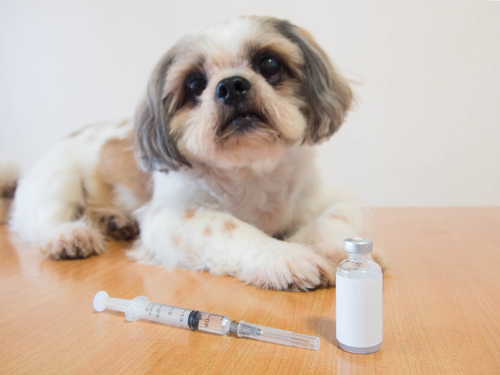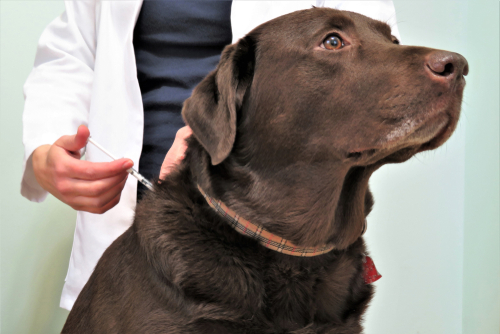Ten Dog Breeds Most Prone to Diabetes
Posted: 11/09/2022 | BY: Erin Cain | Categories: Dog , Health problems , Pet care
If you’re a dog owner, you know that there are all sorts of health issues that dogs may develop. Some are prone to specific health problems, and diabetes is one of them. If your dog is one of the ten breeds most prone to diabetes, keeping your pup healthy is essential. Diabetes can be a serious condition, but with early detection and treatment, your dog can live a long and happy life. Keep reading for more information on the ten dog breeds most prone to diabetes and what you can do to protect your furry friend.

What is diabetes in dogs?
Diabetes is when the body cannot produce enough insulin to process sugar from food into energy for cells. The most common form of canine diabetes is diabetes mellitus, or “sugar diabetes.” This condition impacts a dog’s blood sugar level and affects the pancreas. This organ regulates blood sugar through insulin production.
A healthy pancreas will produce enough insulin to moderate the sugar in the body. A diabetic dog, however, has a pancreas that cannot produce enough insulin, leading to the most common form of canine diabetes, insulin-deficiency diabetes.
Some dogs develop insulin-resistant diabetes, where the pancreas produces insulin. Still, the canine body does not use insulin correctly. This process leads to high blood sugar levels. This type of canine diabetes occurs most often in obese or older dogs.
Regardless of the type of canine diabetes, the results are the same: high blood sugar levels affect the rest of the body’s functions. The severity of diabetes depends on how quickly the diagnosis and treatment begin.

10 Dog Breeds Most Prone to Diabetes
Approximately one in every 200 to 500 dogs will develop diabetes in their lifetime. While any dog can develop the condition, some breeds are more prone to it than others.
Are you thinking about adding a dog to your family? In that case, it’s always important to be aware of the inherent risk of certain illnesses and diseases. Here are ten of the most common breeds that may be at risk:
1. Poodle
Poodles are among the most popular dog breeds worldwide and are most prone to developing diabetes. This breed is predisposed to the disease due to their size and rapid metabolism. If you have a poodle, it’s essential to keep an eye on their weight and diet, as obesity can trigger diabetes.
2. Dachshund
Dachshunds are another small breed of dog that is particularly susceptible to diabetes. Because they are long and low to the ground, dachshunds often suffer back problems, making it difficult for them to exercise. This lack of activity combined with an unhealthy diet can lead to obesity and, eventually, diabetes.

3. Cocker Spaniel
Cocker Spaniels are another popular breed of dog prone to developing diabetes. Because Cocker Spaniels have a higher rate of obesity than other breeds, they are at greater risk for the disease. In addition, this dog breed tends to suffer from pancreatitis, an inflammation of the pancreas that can also lead to diabetes.
4. Beagle
Beagles are another breed of dog known for developing diabetes. Beagles are often considered “food hounds” because they love to eat just about anything they can get their paws on. This love of food, coupled with their inactive lifestyle, makes them susceptible to obesity and thus increases their risk of developing diabetes.
5. Bichons Frise
Bichons Frises are a small breed of dog that is often overlooked in diabetes, but they have one of the highest disease rates within their breed. These pups have a higher incidence of pancreatitis, which puts them at greater risk for developing diabetes. Additionally, aside from genetic elements that can lead to diabetes in the Bichon, recent studies have noted a connection between diabetes in this breed and autoimmune disease.

6. Miniature Schnauzer
Miniature Schnauzers are another small breed of dog that often develops diabetes. This adorable breed tends to be very active dogs. However, they still have a higher incidence of pancreatitis, which puts them at greater risk for diabetes.
7. Labrador Retriever
Labrador Retrievers are one of the most popular breeds of dogs and are susceptible to developing diabetes. Labs have a predisposition towards obesity which can lead to diabetes. In addition, this breed often suffers from allergies that can trigger diabetes.

8. Pomeranian
The Pomeranian may be small and incredibly cute, but their tiny stature means they can quickly gain weight and become obese if they are not kept on a nutritious diet. According to the breed guidelines, an obese Pomeranian is far more likely to become diabetic than one with a healthy weight.
9. Keeshond
The Keeshond is genetically susceptible to insulin-resistant diabetes. A Keeshond does not need to be obese to develop this disease as it is inherent in their genes. That said, Keeshonds are energetic dogs who need frequent exercise as they can quickly become obese, leading to diabetes.

10. Samoyed
Similar to the Keeshond, the Samoyed breed is genetically predisposed to diabetes. Research shows that several genes identified in the Samoyed increase the breed’s likelihood of this disease. Scientists do not yet know why this breed has so many genetic markers associated with diabetes.
It’s important to understand that just because a dog breed has a higher chance of developing a disease doesn’t mean that your dog will. But it’s helpful to watch your dog for illnesses that may occur during her life.
Diabetes treatment is costly; let pet insurance get the bill.
With your dog’s diagnosis of diabetes, you will have to make more frequent vet visits for testing and medication adjustments. Your veterinarian will help determine the best treatment plan suited for your dog’s type and level of diabetes. Regardless, you will need to manage this disease throughout your dog’s life, leading to multiple vet visits and medications.
The costs for lifelong treatment of a canine illness will increase over time. A pet insurance policy will reimburse you for most of those costs, and your dog will have access to the best veterinarians and treatments. Be a proactive pet parent, and get a free quote for your dog’s pet insurance plan now.
References:
- Cornelius, S. (2022). Does Your Dog Need Diabetic Dog Food? Retrieved from https://www.caninejournal.com/diabetic-dog-food/
- Shores, D. (2021). Best Dog Food for Beagles: 5 Vet Recommended Brands. Retrieved from https://topdogtips.com/best-dog-food-for-beagles/
- Halstead, V. (2021). Canine Diabetes Mellitus. Retrieved from https://bichon.org/health/health-articles/endocrine-hormones/canine-diabetes/
- Hess, R., et al (2019). An Exploratory Association Analysis of the Insulin Gene Region With Diabetes Mellitus in Two Dog Breeds. Retrieved from https://academic.oup.com/jhered/article/110/7/793/5582035?login=false
The information contained on this blog is intended for informational and educational purposes only and should not be construed as medical advice. It is not a substitute for professional veterinary care. Always consult with your veterinarian before making any changes to your pet's health care or treatment plan.
The authors of this blog are not veterinarians and do not claim to be experts in pet health. The information provided here is based on our own experiences and research, as well as information from reputable sources. However, we cannot guarantee the accuracy or completeness of this information.
We encourage you to do your own research and consult with your veterinarian before making any decisions about your pet's health.
Previous post
What to Know About Mange in DogsCompare top pet insurance providers plans.
Enter your dog’s age in years and months to calculate their age equivalent to human years.
Calculate your dog’s ageEnter your cat’s age in years and months to calculate their age equivalent to human years.
Calculate your cat’s age